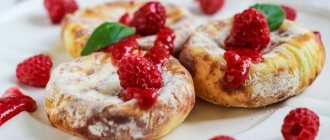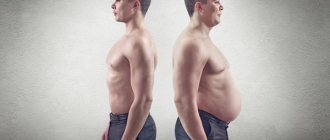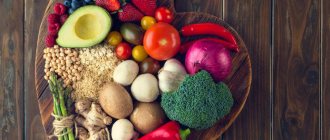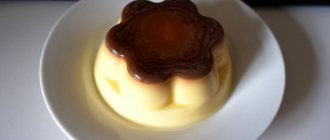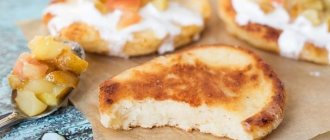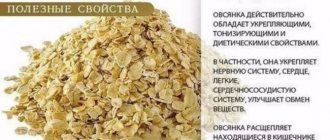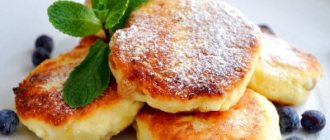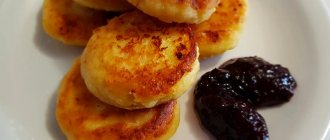How to cook cheesecakes
I squeeze out the excess liquid from the cottage cheese with paper towels, and if there is a lot of it, next time I choose a different cottage cheese.
Store-bought cottage cheese contains a lot of moisture
Store-bought cottage cheese contains a lot of moisture
Egg whites are excess liquid, so I only put yolks in the cottage cheese. For two 180 gram packs of cottage cheese you will need two egg yolks. I add half a teaspoon of salt and two tablespoons of sugar. Don't add a lot of sugar, it will liquefy the curd.
I only add yolks to the cottage cheese.
I only add yolks to the cottage cheese.
Now flour, put 1.5 - 2 tablespoons of flour on two packs of cottage cheese. If you realize that there is more moisture in the cottage cheese than necessary, add a little more flour. I mix all the ingredients.
I put the mixture on a table sprinkled with flour and roll it in flour, forming a “sausage” with my hands.
Roll the curd mass in flour
Roll the curd mass in flour
I cut the “sausage” into six pieces with a knife. I roll each part in flour and give it the desired shape.
Forming cheesecakes
Forming cheesecakes
To ensure that the cheesecakes are well baked, I fry them over medium heat, with the addition of vegetable oil, for about 3-5 minutes on each side until golden brown.
Frying cheesecakes in a frying pan
At the end of frying, if desired, add a little butter.
Here is the VIDEO RECIPE
Thank you if you liked, left a comment and subscribed to the channel!
Welcome!
SUBSCRIBE TO THE CHANNEL
I recommend watching:
Flour + Potatoes. The pies are like POOH! This recipe is an instant hit!
Pies with potatoes
Pies with potatoes
Point No. 2: liquid in cottage cheese
If this is your first time buying the type of cottage cheese described above, I would advise you to put it under a press and see what comes out (or rather, flows out). Take a kitchen “waffle” towel or gauze folded in 4-5 layers, cover the colander, lay out the cottage cheese, cover with the hanging ends of the towel, place the colander in the sink or in a large basin. Place a board or flat plate on the cottage cheese, and on it - the largest pan filled to the top with water. And leave it for a couple of hours. During this time, excess whey will drain. If there is too much of it, next time look for a different cottage cheese. Don't throw away the whey! You can make delicious and healthy smoothies from it (for example, with cucumbers, ginger and herbs) or use it for pancakes.
To remove excess liquid from the cottage cheese, you need to put it under a press
Step-by-step preparation
Step 1:
Preparing the ingredients. Those who want to get a completely low-calorie version of cheesecakes can replace wheat flour with oatmeal, preparing it themselves from oatmeal. However, wheat flour makes cheesecakes lighter and airier in taste, so it is better to use it. Since it needs to be added very little, it will not add much calories. Pour low-fat cottage cheese (or a product with a low fat content) into a bowl.
Step 2:
Add a pinch of salt and a pinch of vanillin to the cottage cheese. We do not add sugar, since we have dietary cheesecakes, and sugar is the main source of carbohydrates. Add a couple of tablespoons of milk; we also take it with low fat content. We need milk so that the cottage cheese becomes paste-like. Beat an egg into a bowl with cottage cheese. A chicken egg is necessary to prevent the cheesecakes from falling apart. It is also a source of protein.
Step 3:
Beat the mass with a blender.
Step 4:
Add a tablespoon of wheat flour and baking powder. Gently and quickly mix the mass. You should get a thick but sticky dough that you can take with your hands. Pour a little flour into a plate. Using a tablespoon, place the curd dough into a plate with flour and form round and plump cheesecakes.
Step 5:
Place them on a dry baking sheet. We bake the cheesecakes in the oven rather than fry them in oil in a frying pan, which will make them even more dietary. Preheat the oven to 180 degrees. Bake the cheesecakes until golden brown, about 25 minutes, but be guided by the operation of your oven. You need enough time for the cheesecakes to bake well, but at the same time not burn.
Step 6:
Remove the cheesecakes from the oven. Carefully remove them from the baking sheet, because they turn out airy and soft. With sharp manipulations they can be blown away. Place them on a plate and let them cool a little, then they will harden but remain just as fluffy. You can lightly dust them with powdered sugar. Serve with honey or cream. Bon appetit!
Many people who watch their figure and are constantly on diets limit themselves in everything, even in healthy and tasty food.
Point No. 9: frying
There are two technological approaches. One is slow frying, covered, from start to finish in a frying pan. It takes 20–30 minutes, depending on the thickness of the cheesecake. The second is quick frying in a frying pan until golden brown on both sides, without a lid; then – finishing in the oven at 150–160 °C. If you eat cheesecakes right away, hot, the second option is prettier - the fluffiness is preserved perfectly in the first 5-10 minutes. Well, in terms of time it’s ten minutes faster.
What to fry with? I have one answer - with good ghee. It doesn't burn and smells wonderful, gives a beautiful crust, and you only need a little bit. If the fire is tiny, you can use butter, of course. Another option is coconut oil or unrefined peanut oil; I don’t like other vegetable oils at all.
You can fry cheesecakes in different ways and it is best to fry them in melted butter.
The mandatory program ends here and the nuances begin. But they are also very important.
Supplements
Raisins and dried cranberries, pieces of dried apricots and prunes, cubes of apple or pear, pre-fried quince or pumpkin, fresh or frozen berries - all these are excellent “fillers” for cheesecakes. The only thing that matters is their number. Too much and they will kill the much-desired traditional cheesecake taste. And again the danger of “collapse” is great. So add no more than a quarter of the weight of the cottage cheese. And about replacing the main ingredient: excellent cheesecakes are made from ricotta!
Raisins, dried cranberries, dried apricots, prunes, apples, pears, pumpkin, fresh or frozen berries are excellent “fillers” for cheesecakes
Diet option
Is it possible to make cheesecakes without any flour or sugar? So that there are no carbohydrates? Well, we already talked about sugar. And you can do it without other carbohydrates too! Only cottage cheese and egg. Just make cheesecakes not in a frying pan, but in silicone molds in the oven. There is no need to lubricate them with oil. For pan lovers, there is one life hack: psyllium. This is the husk of plantain seeds ground into powder. Zero calories, zero carbohydrates, almost zero taste. But excellent binding properties. It's just expensive.
Unsweetened cheesecakes
I know many lovers of savory cheesecakes, and I myself love them very much from time to time. As a binding element, you can add grated Parmesan and just a little starch to be sure. Well, the toppings are the most wonderful: sun-dried tomatoes, olives, chopped herbs, garlic, poached spinach - everything is very tasty! Then you can fry it in olive oil.
Grated Parmesan, sun-dried tomatoes, olives, chopped herbs, garlic, poached spinach - wonderful fillings for savory cheesecakes
Is it possible to eat cheesecakes while losing weight and on weight loss?
In order to accurately answer the question of whether cheesecakes are possible on a diet, let's look at the composition of a regular dish and compare it with special recipes on pp!
The required ingredients for a typical recipe look like this:
- cottage cheese. And definitely fattier and tastier. Many people adhere to the rule that the fattier the product, the tastier the dish will be in the end. Some recommend using a dairy product with a fat content of up to 23%, then the dish will also be very satisfying.
- regular flour. Premium wheat with 364 calories.
- semolina. Very often it is added to the recipe, then the product turns out very fluffy.
- regular sugar. There is no way to do without it. The more sugar, the sweeter and tastier your dish! Meanwhile, 100 grams of sugar accounts for as much as 400 calories!
- vegetable oil. It is needed for frying our cheesecakes, and as you understand, a lot of it is used during the cooking process. This product “loves” oil and we happily absorb it. Our cheesecakes take about 30% of the oil, thereby greatly increasing the calorie content of the finished product!
As a result, when we calculate the calorie content of the finished dish, it can easily reach 300 calories per 100 grams!!! How many grams of this product can you eat at one time? At least 200 grams for sure, so you will eat half or a third of your calories in one meal! Amazing, isn't it?
Now let’s look at the composition of pp cheesecakes, then you can clearly compare the two recipes and understand which pp cheesecakes you can safely include in your diet menu.
- low-fat cottage cheese. Your maximum is a 5% product. Actually, this figure is the golden mean for those who want to get a real dish with reduced calorie content, but at the same time tasty and in no way reminiscent of a strict dietary recipe. Of course, if you scrupulously count calories and every one counts, feel free to go for 0% fat.
- flour for cheesecakes. Take not just regular, but definitely whole grain! And it’s better if it’s oatmeal. Is there no such torment? No problem. Put a handful of oatmeal in a coffee grinder - a couple of seconds and the best flour for pp is ready! Don't be surprised if you come across recipes that don't contain flour at all! Everything is possible.
- natural sweetener. Of course, a pp recipe cannot contain regular sugar. Here you have complete carte blanche and you can choose any sugar substitute that you like best. However, you can even do without it! You don't have to put it in the recipe, because at the end you can simply sprinkle the finished dish with powdered sugar and - voila!
- protein. But here's good news for those who seriously monitor their diet and control their protein intake. You can add it to this recipe and thereby increase its amount in the finished dish!
Now let's take a look at our numbers in this version!
If you follow all the recommendations, you can end up with a calorie content of about 100 calories per 100 grams!
That is, we reduced the figure three times! Excellent result.
This dish will be your ideal breakfast, lunch and dinner. And also a unique snack that will help you stay away from junk food with empty calories during a strong feeling of hunger.
Still have doubts about cheesecakes?
PP cottage cheese casseroles: 12 recipes

